
Reuben Egg Rolls are a fusion dish that combines the flavors of a classic Reuben sandwich with the form and function of an egg roll. They’re typically made by stuffing egg roll wrappers with the traditional ingredients of a Reuben sandwich, such as corned beef, Swiss cheese, sauerkraut, and Thousand Island dressing.
Once stuffed and rolled, the Reuben Egg Rolls are usually fried until golden brown and crispy. The result is a crunchy, savory appetizer with the rich and tangy flavors of a Reuben sandwich, all packaged in a convenient finger food format.
Reuben Egg Rolls might be served with additional Thousand Island dressing or another complementary sauce for dipping. They are popular in some bars and restaurants as appetizers or party food and can be made at home for a creative twist on the classic Reuben flavors.
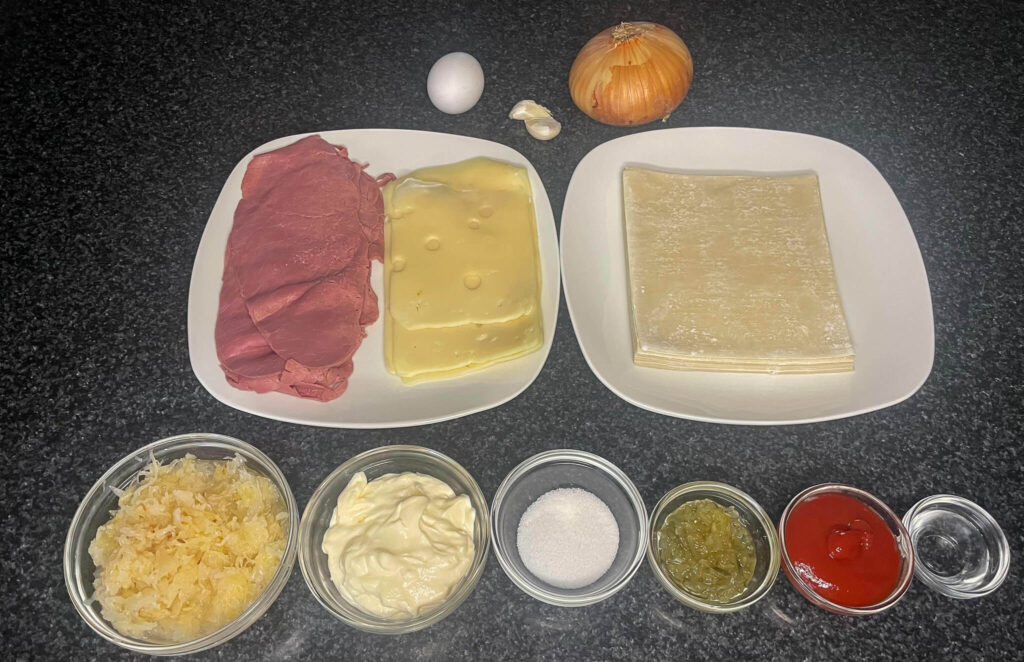

1-2 Cloves of Garlic
1 Sweet Onion
1/4 Pound Swiss Cheese
1 Egg

1 cup Mayonaise
2 Tsp Sugar
2 Tbsp Sweet Pickle Relish
3 Tbsp Ketchup
2 Tsp White Wine Vinegar
Eggroll sheets
Sauerkraut
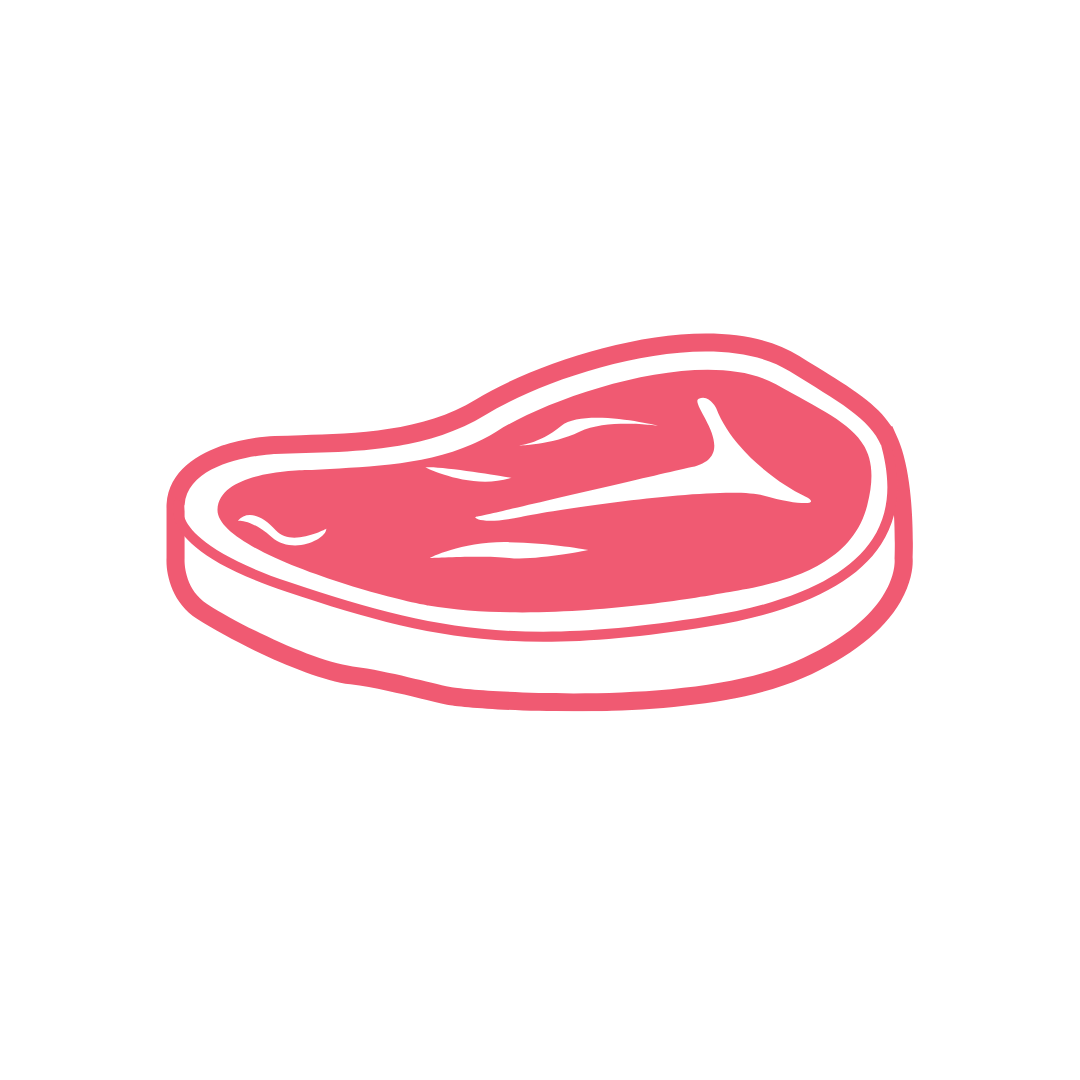
1/2 Pound Corned Beef Cold Cut
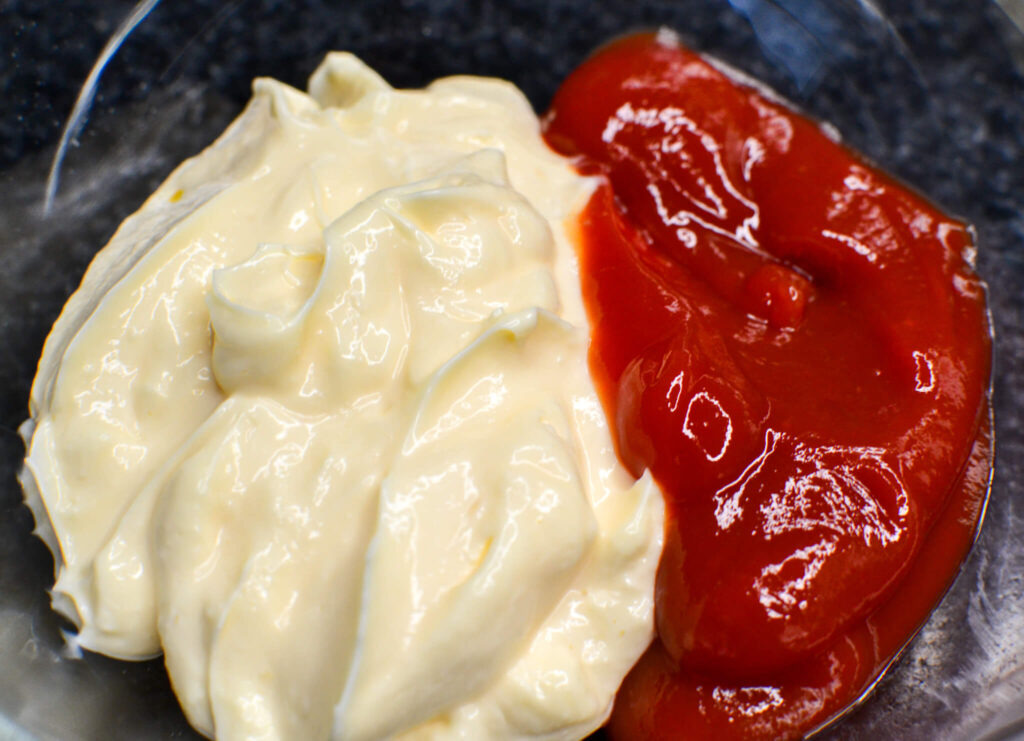
First, we’re going to make thousand island dressing to pair with the Reuben Egg Rolls.
Thousand Island dressing is a popular salad dressing and sandwich spread that is believed to have originated in the early 20th century. Its name supposedly comes from the Thousand Islands region located between the United States and Canada in the Saint Lawrence River.
The dressing is typically a mix of mayonnaise, ketchup (or tomato purée), finely chopped pickles (or pickle relish), and sometimes includes ingredients like onions, bell peppers, hard-boiled eggs, and Worcestershire sauce. The result is a creamy dressing with a slight tanginess and sweetness, punctuated by the texture of the finely chopped ingredients. This dressing pairs well with Reuben Egg Rolls because the flavor complements the savory notes of the corned beef and the fermented essence of the sauerkraut. There’s also a wonderful contrast between the crispy exterior of the egg rolls and the to the creamy texture of the dressing, achieving a well-balanced mouthfeel.
To start, combine 1/2 cup of mayonaise and 3 tablespoons ketchup.
Ketchup and mayonnaise serve as an excellent base for dressings like Thousand Island due to their complementary taste profiles and textures. Ketchup, with its slightly tangy and sweet flavor, adds depth and richness to a dressing, while its vibrant red hue provides a visually appealing color. On the other hand, mayonnaise, with its creamy and smooth consistency, gives the dressing its velvety texture, making it perfect for coating and clinging to a variety of foods. Additionally, mayonnaise’s mild and slightly tangy undertones help to mellow out the pronounced sweetness of the ketchup.
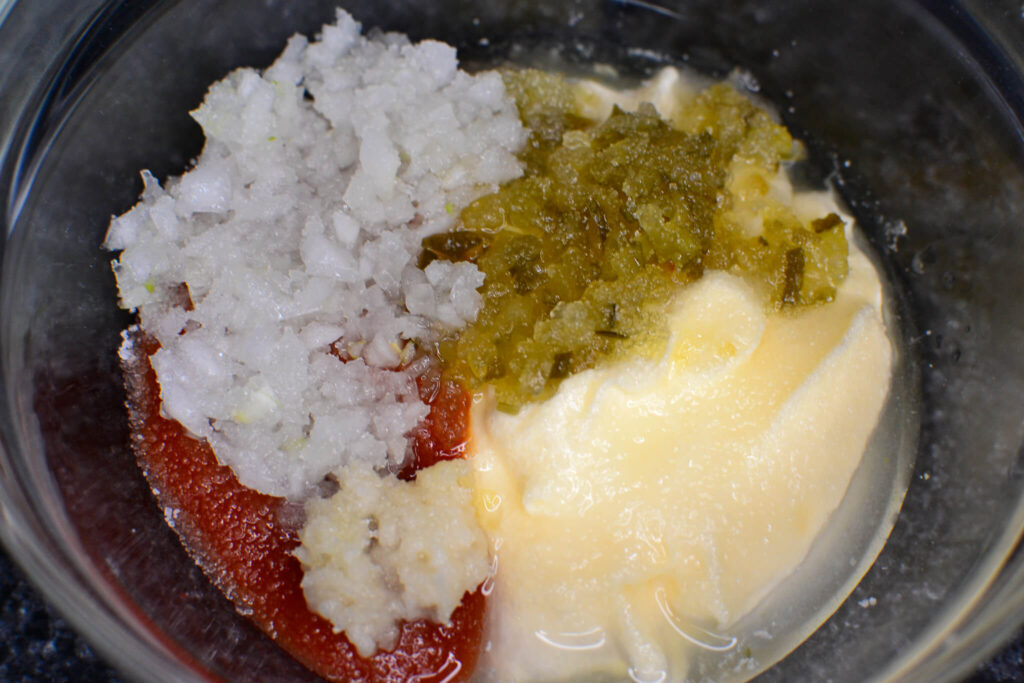
The additional ingredients to add are:
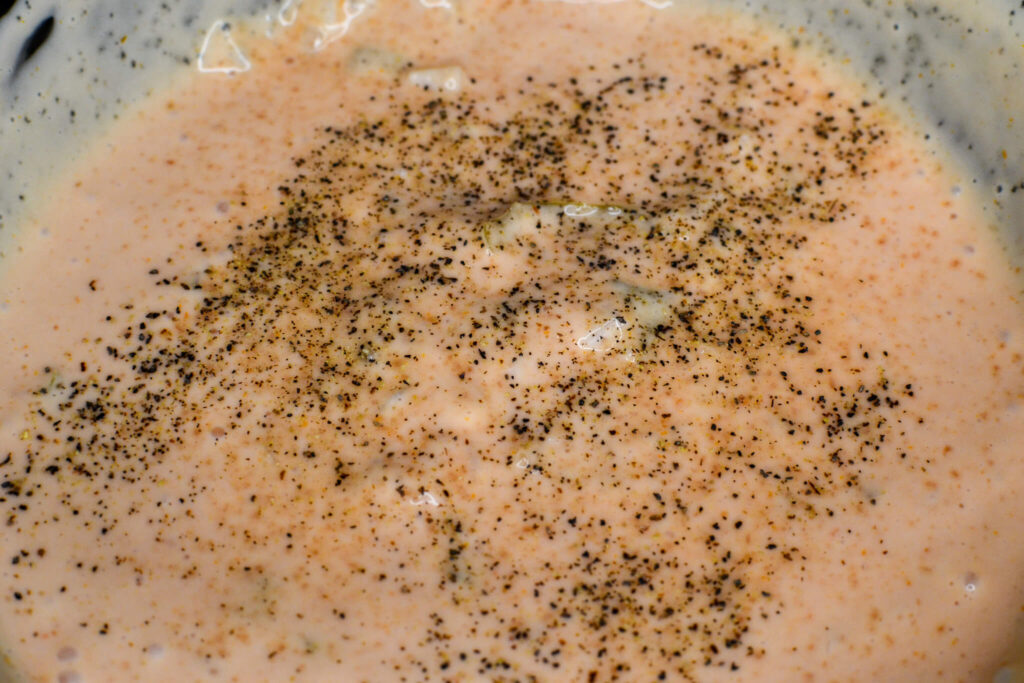
Once whiskey, season with salt and pepper.
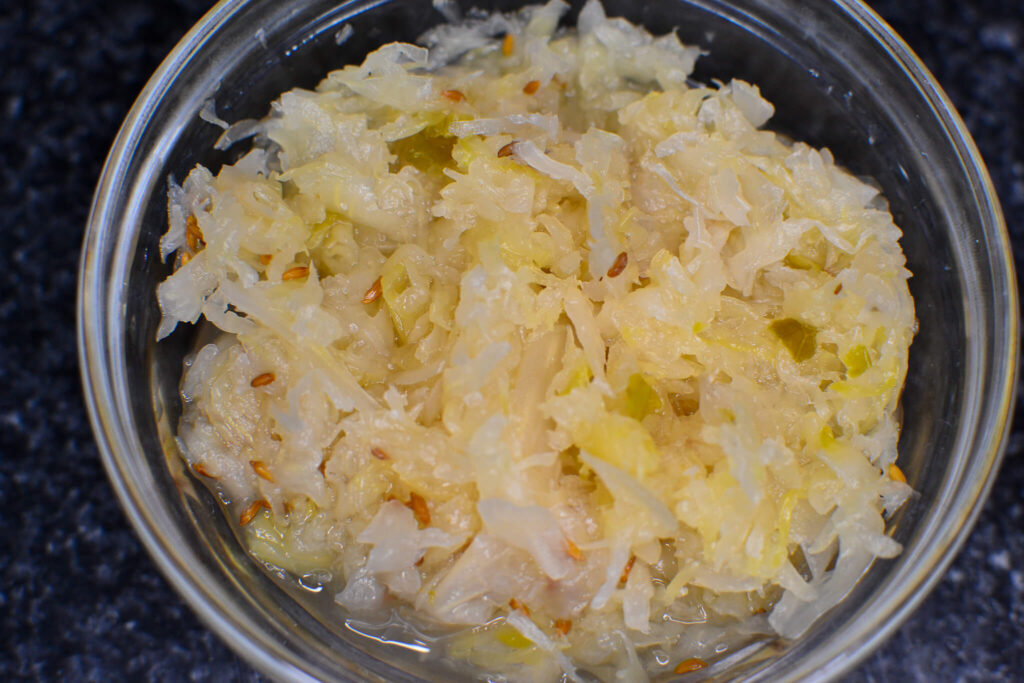
Sauerkraut is a traditional fermented food made primarily from finely sliced cabbage and salt. The cabbage is packed in layers, sprinkled with salt, and then left to ferment for several weeks. The fermentation process is facilitated by the naturally occurring bacteria on the cabbage, predominantly lactic acid bacteria. As these bacteria consume the sugars in the cabbage, they produce lactic acid. This acid not only gives sauerkraut its characteristic tangy flavor but also acts as a preservative, inhibiting the growth of harmful bacteria.
Straining sauerkraut is a crucial step in may culinary applications due to its inherent moisture content and the impact of this on dish texture and flavor. Naturally, sauerkraut contains a significant amount of brine, a salty liquid produced during its fermentation. When incorporated into dishes like sandwiches or casseroles, unstrained sauerkraut can introduce excessive moisture, leading to a soggy outcome that detracts from the desired texture.
Furthermore, straining can concentrate the tangy flavor of the sauerkraut, providing a robust taste profile without dilution from the brine. In cooking scenarios, unstrained sauerkraut might unpredictably release moisture, altering cooking times and potentially compromising the final result. Beyond texture and cooking dynamics, a well-strained sauerkraut often presents better visually in dishes where structural integrity or crispness is paramount. While the brine itself is flavorful and packed with beneficial probiotics, the decision to strain sauerkraut largely hinges on individual dish requirements and personal preferences.
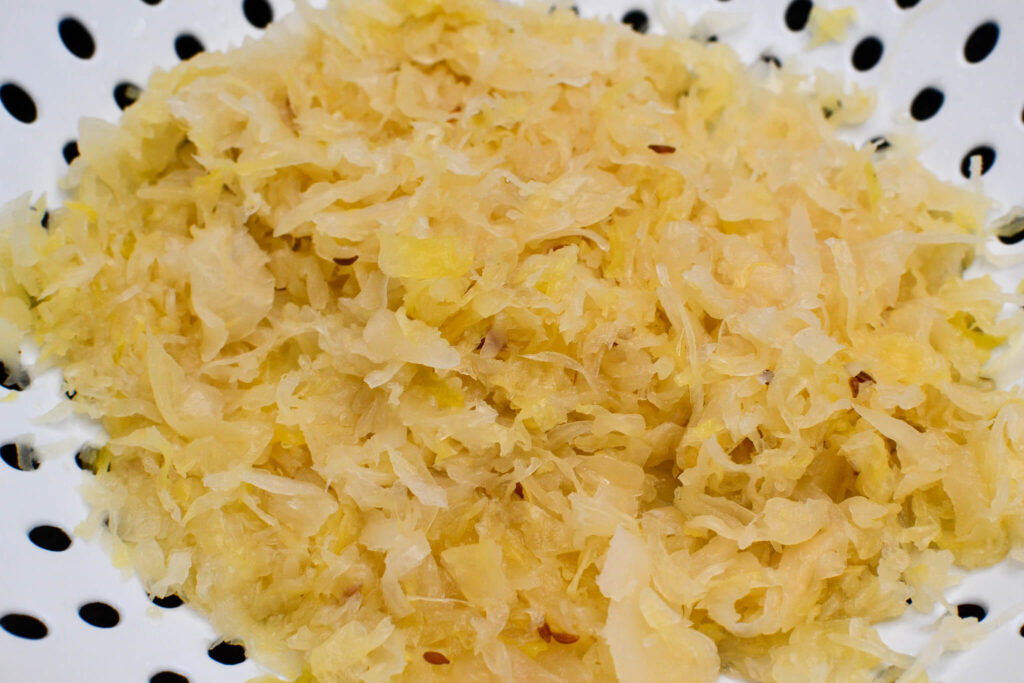
Straining sauerkraut is a straightforward process, but doing it correctly ensures that you maintain its flavor while removing excess moisture. Begin by placing a fine-mesh strainer over a bowl or sink to catch the brine. Pour the sauerkraut into the strainer and allow the liquid to naturally drain for a few minutes.
For a more thorough strain, you can gently press the sauerkraut with the back of a spoon or with clean hands to extract more of the liquid. If you’re planning on saving the brine, make sure to strain over a bowl. This collected brine can be reserved for other culinary uses or to store any leftover sauerkraut, as the acidic environment it provides helps in preserving freshness and preventing spoilage. Once strained to your satisfaction, the sauerkraut is ready to go!
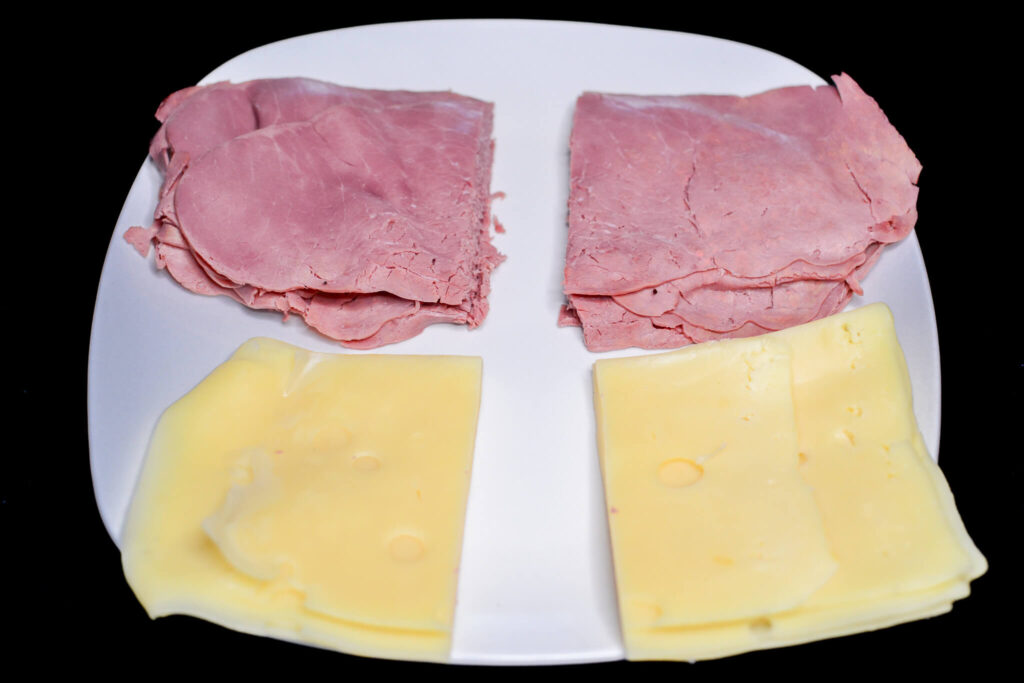
These reuben egg rolls are simply using corned beef cold cut, which has been cooked, cooled, and then thinly sliced to be used primarily in sandwiches. It’s found in the deli section of many supermarkets, ready to be used without any further cooking. The other option is to use corned beef brisket, which is essentially a large chunk of beef brisket that has been corned or cured. It’s often sold in vacuum-sealed packages and requires cooking (usually through boiling or baking) before it’s consumed.
The corned beef cold cut is a cheaper alternative that still provides the a great flavor with no cooking required. Cut your cold cut corned beef and Swiss cheese in half to ensure they will fit in the egg roll.
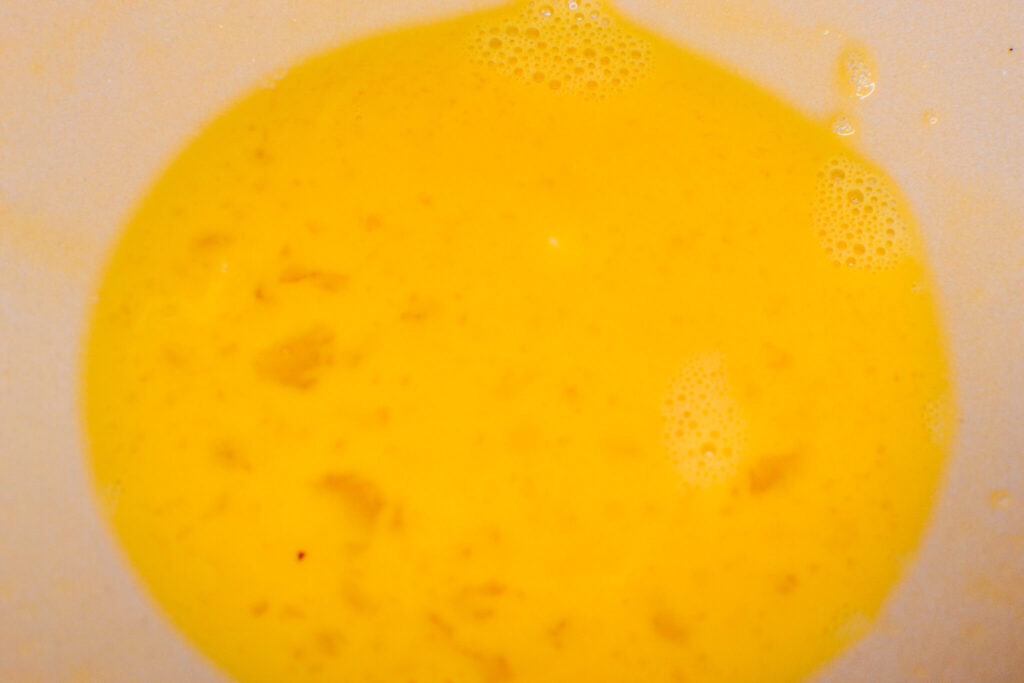
In order to create a strong seal when wrapping the egg rolls, you’re going to need to scramble 1 egg with a tablespoon of water to create an egg wash. A few main reasons for an egg wash include:
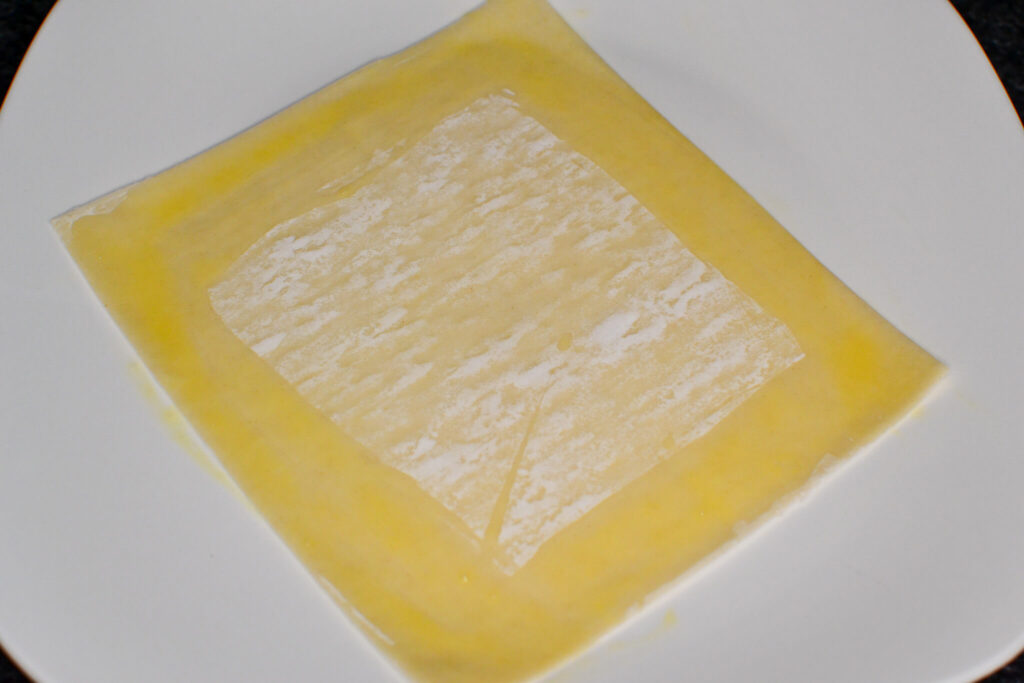
Start by laying the egg roll wraps in a diamond shape, brushing the egg wash mixture on all sides.
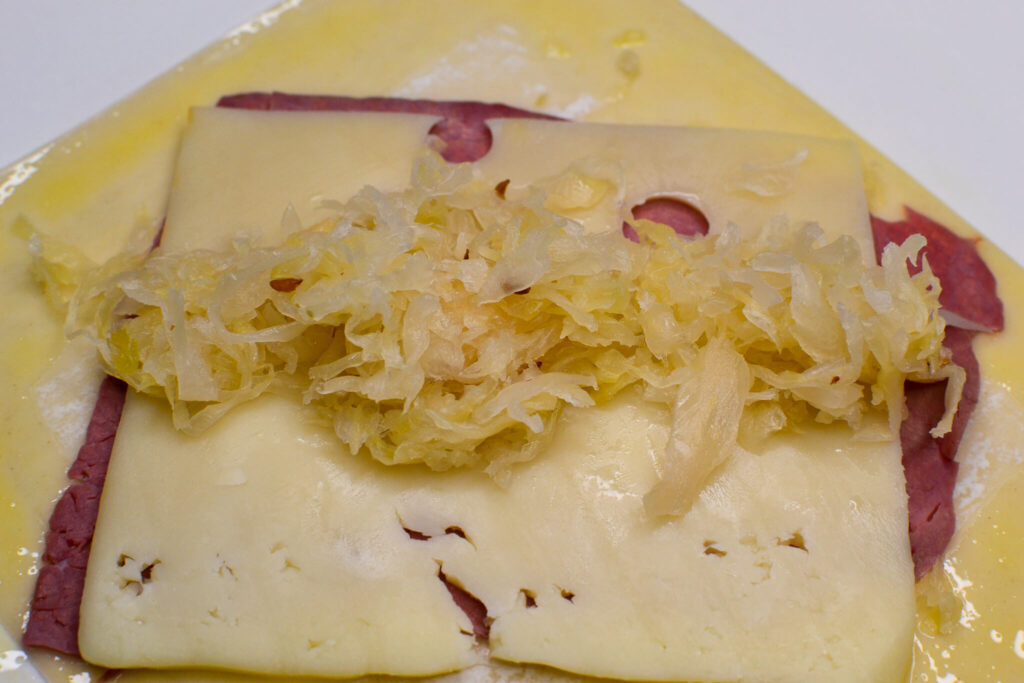
Then, you’re going to create a layer of:
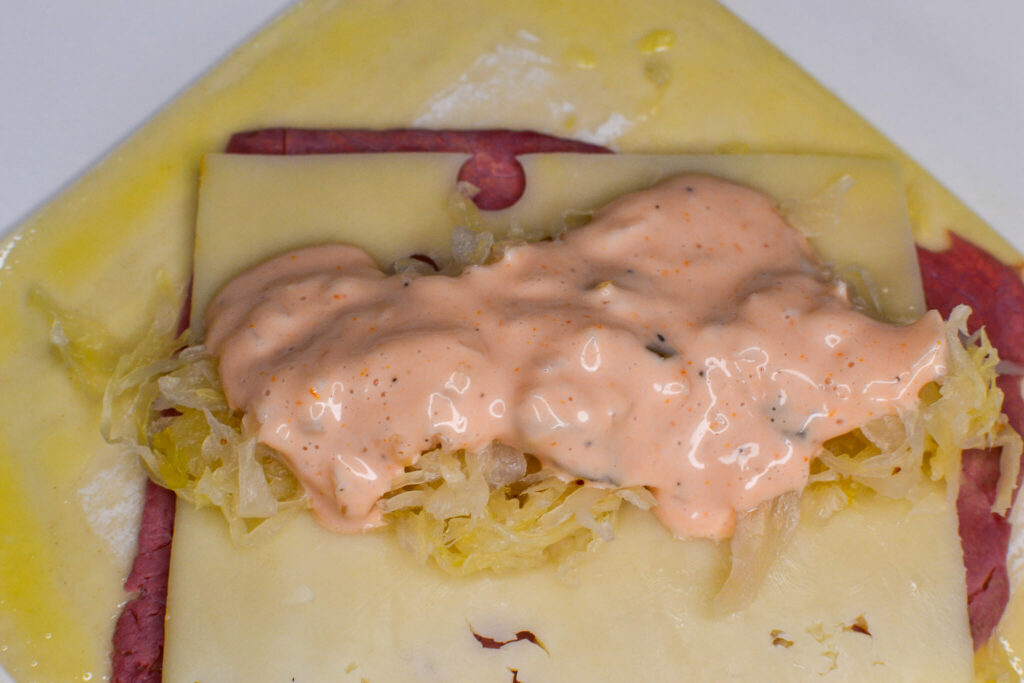
Next, incorporate a bit of the homemade Thousand Island dressing. I’d suggest not exceeding 2 tsp to keep the inside of the Reuben egg roll moist. Remember, you can always use more for dipping later on.
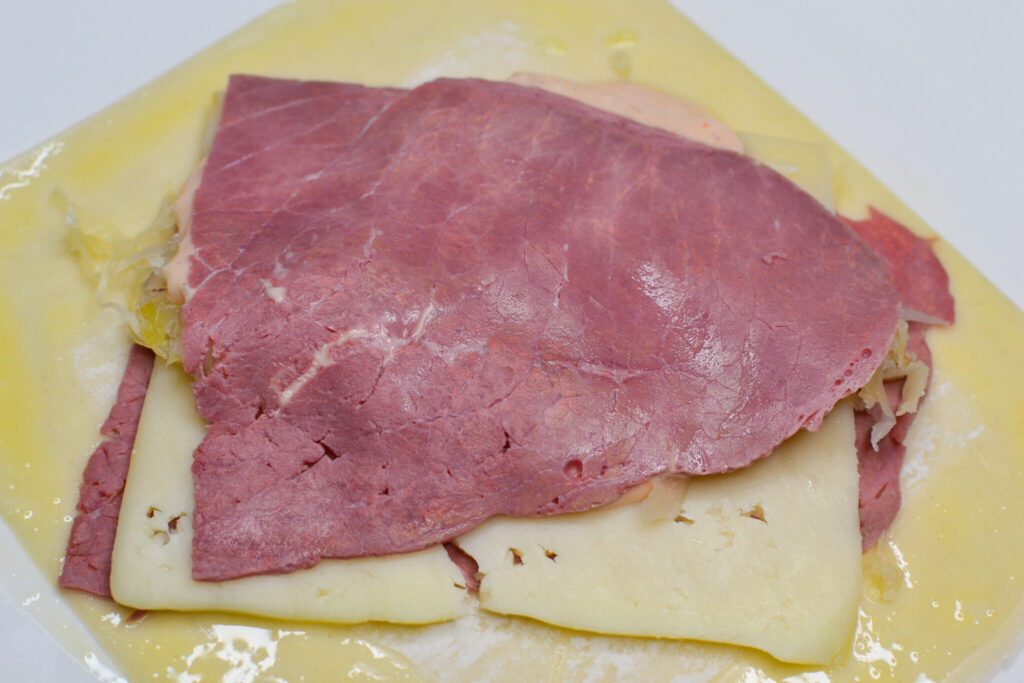
Once you’ve added an appropriate amount of dressing, top it with one more layer of corned beef cold cut.
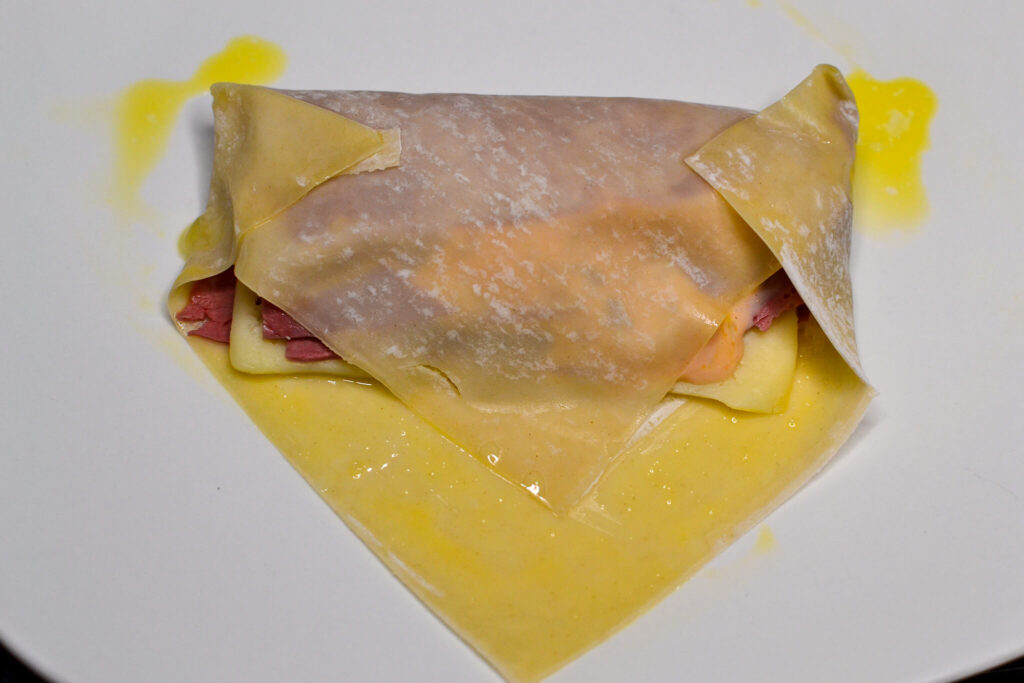
Next, fold your egg rolls:
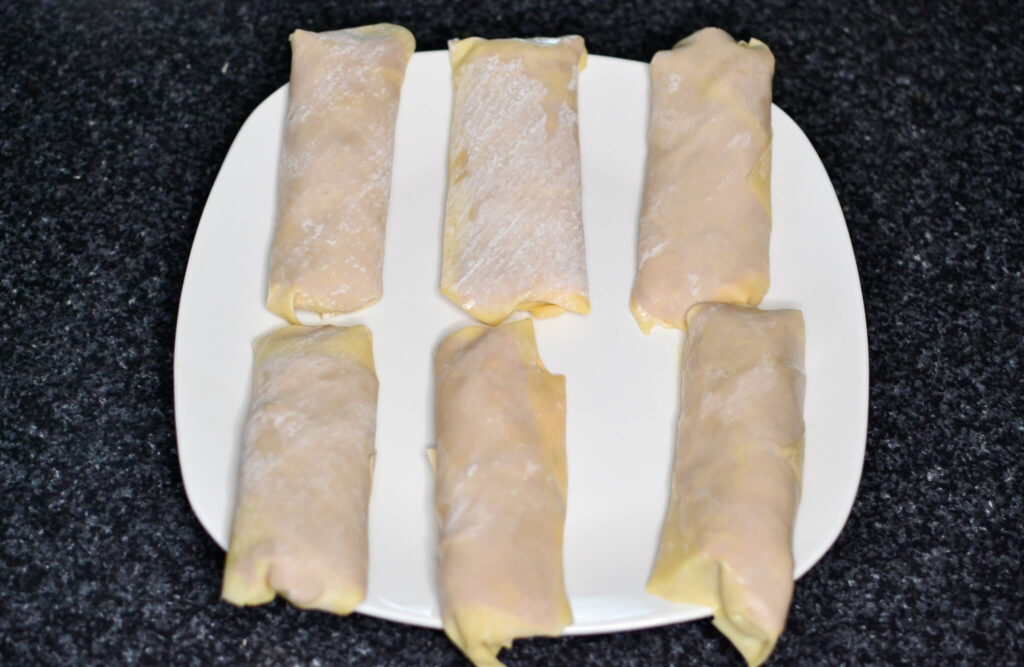
Repeat this process for at least 6 quality egg rolls.
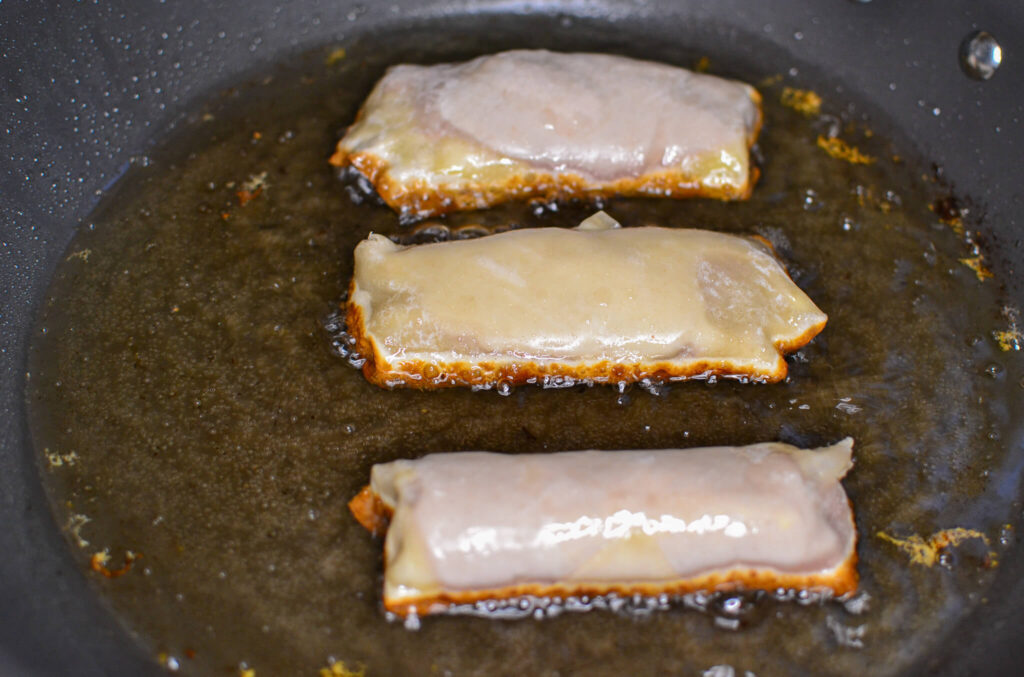
Lastly, time to fry them. If you aren’t familiar with this process, here is how it goes:

After carefully preparing and frying, you’re now ready to savor the delightful fusion of flavors in the Reuben egg rolls. Pair it with the homemade thousand island dressing as a dip and enjoy!
